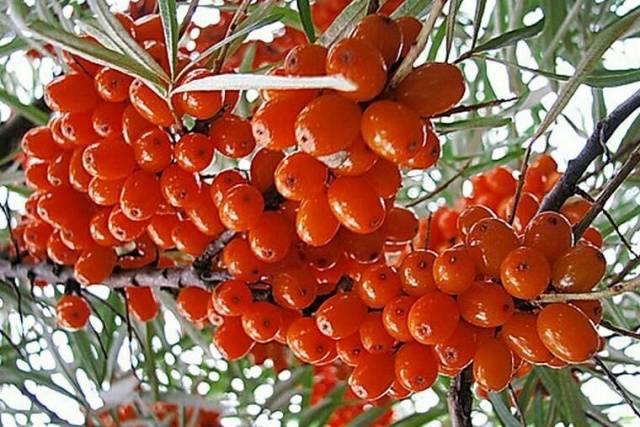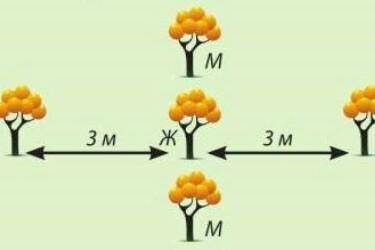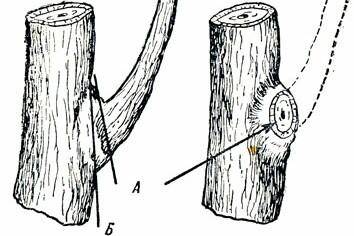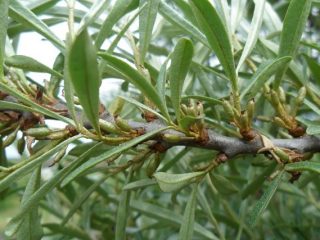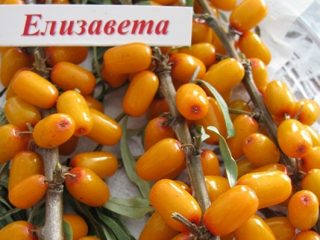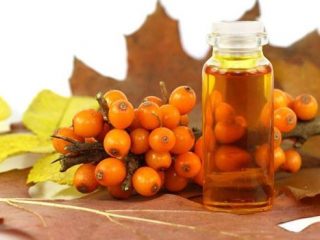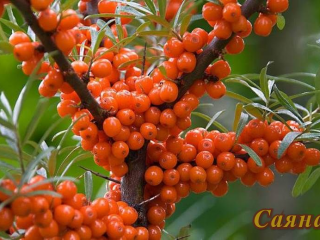Content
Jam sea buckthorn will be a real godsend for those who decide to plant a high-yielding and reliable variety of crop. Reviews about Jamovaya sea buckthorn are extremely positive; problems with its cultivation arise only in isolated cases.
History of selection
The Dzhemovaya variety was bred in the Altai Territory, the originator is the Siberian Research Institute of Horticulture named after M. A. Lisavenko. This variety was obtained by Siberian breeders as a result of free pollination of the Prevoshodnaya sea buckthorn. Since 2001, the Dzhemovaya variety has undergone state variety testing, and since 2015 it has been included in the State Register.
Description of the berry crop
For clarity, below are the most important information about the Jamovaya sea buckthorn variety with photos.
General idea of the variety
Jemova bushes grow no more than 2.5 m, and the erect shoots do not have thorns - all this contributes to quick and safe harvesting. The dark green leaf blades are medium in size and slightly concave in the middle. The rounded crown of the bush is medium dense.
Berries
The Jamovaya variety is valued primarily for the excellent taste characteristics of the fruit - the sweet and sour berries received a tasting score of 4.4 points out of 5 possible. The variety belongs to large-fruited sea buckthorn: the weight of the berry is 0.8-0.9 g. The shape is oval, elongated. Due to the bright orange-red color of the Jamovaya berries, it looks very decorative during fruiting.
Characteristic
The description of sea buckthorn Jamovaya is presented in detailed varietal characteristics given below.
Main advantages
Jam is distinguished by high rates of drought resistance and frost resistance (up to -35 0Its shoots do not freeze). Like most other varieties of sea buckthorn, it is unpretentious in care - with proper planting and minimal care it produces consistently high yields. When preparing a planting site for Jemova, you should take into account the type of soil - the variety grows well on any soil, except heavy and acidic.
Flowering period and ripening time
Female Jam Sea Buckthorn trees bloom in early to mid-May, producing yellowish flowers without fragrance. The ripening period of the variety is average, so the fruits can be harvested in early autumn. Since climatic conditions are different in different regions of the country, these dates can be considered conditional.
Yield indicators, fruiting dates
The sea buckthorn variety Jamovaya is considered very productive and produces about 12 kg of fruit from one bush.After planting, the sea buckthorn bush bears fruit in the 4th year.
Area of application of berries
The dessert taste characteristics of sea buckthorn berries of the Dzhemovaya variety allow them to be widely used in processing and preparing preparations for the winter: juices, jams. The fruits are suitable for freezing.
Resistance to diseases and pests
The variety has good resistance to possible diseases and pests, with the exception of the sea buckthorn fly - this insect most often affects Jemova bushes.
Advantages and disadvantages of the variety
The Jamovaya variety has a lot of positive characteristics, thanks to which it has gained great popularity among Russian summer residents. Among them are:
- low stature of the bush;
- absence of thorns;
- excellent frost resistance;
- large fruit;
- sufficient stalk length;
- dessert taste characteristics of berries.
This sea buckthorn has several significant disadvantages, for example, semi-dry detachment of berries and frequent infestation by the sea buckthorn fly.
Landing rules
In order for the sea buckthorn bush of the Jamovaya variety to take root, it is necessary to properly plant it in a permanent place.
Recommended timing
Planting a Jemovaya bush depends on the presence of an earthen lump on the roots: if it is absent, then sea buckthorn is planted in early spring, as soon as the ground thaws, in late March - early April. For autumn planting, seedlings with a closed root system are suitable; then planting takes place at least a month before the onset of stable frosts.
Choosing a suitable location
When choosing a landing site for Jemova, you need to take into account several important requirements:
- Placing sea buckthorn on a site involves planting two seedlings - a male and a female.
- The sea buckthorn bush bears fruit well only in sunny, well-lit areas, so there should be no shading (you should not plant sea buckthorn next to tall crops).
- The root system of sea buckthorn is powerful and spreading, so near groundwater it can freeze due to temperature changes. Also, due to the characteristics of the root system, Jamovaya should be planted separately; proximity to any crops is undesirable.
- In order for pollination to occur efficiently and pollen to fall on the pistils of the female plant, when planting a male specimen, the direction of the wind is taken into account.
Soil preparation
To plant a young annual Jemova bush, it is enough to dig a hole 50 × 50 cm and fill it with a nutrient mixture. Drainage is placed at the bottom, for example, river sand, a bucket of organic matter (compost, humus), mineral fertilizers, for example, 200 g of superphosphate, are poured on top, and sprinkled with a loose top layer of soil until a flat surface is formed.
Selection and preparation of seedlings
Plants that have no signs of diseases or pests take root well, so it is important to inspect the bushes in detail before planting. If it is possible to assess the condition of the root system, then you should pay attention to its development - the seedling should have 4-6 skeletal roots. The optimal height of the above-ground part is about 20 cm.
Algorithm and landing scheme
The optimal planting pattern for sea buckthorn is 3 × 2.5 m, but the distance can be increased. The seedlings are placed in the prepared holes, straightening the roots (with the root system open). It is recommended to plant grafted sea buckthorn on a small mound so that when watering, the grafting site does not end up in the ground. Self-rooted sea buckthorns can be buried - they will send out additional roots.
Subsequent care of the crop
Growing Jam sea buckthorn does not cause difficulties even for novice gardeners.
Necessary activities
Caring for sea buckthorn includes the operations below:
- Watering. After planting the Jemova seedling, monitor the soil moisture and water it so that it does not dry out. After the bush adapts to new conditions and takes root, watering is reduced and not carried out at all, with the exception of especially hot days.
- Feeding. Jam is undemanding to soil fertility. In the first year of planting, you don’t have to feed it at all if the bush was planted in fertilized soil. Already fruit-bearing adult specimens need to be fertilized - in the spring they are fed with nitrogen-containing fertilizers, and in the summer and autumn - with phosphorus-potassium fertilizers.
- Processing the tree trunk circle: weeding and loosening. To limit growth weedTo prevent the formation of a dry crust on the surface and retain moisture in the soil, it is recommended to mulch the tree trunk circle of the bush.
Shrub pruning
The Jemovaya bush is characterized by weak growth and a not too thick crown, so it does not need to be formed. Pruning sea buckthorn is undesirable, as the crop does not tolerate it well.Autumn sanitary pruning of the bush into a ring is recommended - removing diseased and dead branches in order to prevent the occurrence of diseases.
Preparing for winter
Since the Jamovaya variety is characterized by high winter hardiness, there is no need to cover the bush for the winter in its adult state. In the first year of planting, it is advisable to mulch the tree trunk circle so that the root system does not freeze. Autumn activities include adding fertilizers containing potassium and phosphorus to the soil.
Diseases and pests
For clarity, possible diseases and pests of sea buckthorn variety Dzhemovaya are collected in tables indicating preventive and treatment measures.
Table 1 - Pests
| Pest | Preventive measures | Control measures |
| Sea buckthorn fly | Mulching the tree trunk circle with a layer of 15 cm makes it difficult for the pest to escape from the soil in the spring | Chemicals: Intavir, Iskra, Fitoverm. Folk remedies: digging up the soil in late autumn, treating with tansy infusion |
| Sea buckthorn moth | Spring spraying during bud break with a solution of biological preparations (“Entobacterin”, etc.) | Treatment with chlorophos (0.4%) during bud break, metaphos (0.3%) during budding |
| Sea buckthorn aphid, gall mite | Timely removal of weeds and plant debris | Chemicals: Intavir, Kleschevit. Folk remedies: repellent infusions of tobacco, onion peels or garlic, potato and tomato tops |
Table 2 - Common diseases
Disease | Signs of the disease | Control measures |
Fusarium wilt | Swelling and redness form on the bark of the shoots, the leaves turn yellow and wither, the fruits are painted in a varietal shade, but do not fill out | Carrying out sanitary pruning to ensure air permeability of the bush, followed by destruction of the pruned shoots (burning). |
Scab | Black ulcers and spots on the bark and leaves of mainly young branches, as well as fruits | At the end of the season, the affected parts of the bush are pruned, and in the spring they are treated with Bordeaux mixture of 1% concentration |
Endomycosis | The fruits become covered with light spots and burst, and slimy grayish pulp flows out of the berry shell. | Timely removal of affected fruits along with the branch. After flowering and during fruit filling, spray with Bordeaux mixture of 1% concentration |
Diseases and pests most often affect weakened plants, the basic care requirements for which are not met. In order for the Jamovaya sea buckthorn bushes to remain healthy and bear fruit successfully, it is necessary to pay special attention to fertilizing, pruning, weeding and loosening.
Conclusion
Sea buckthorn Jamovaya is appreciated by Russian gardeners and has become widespread in parts of the country, since not every variety of crop is able to combine so many advantages.
For a more detailed introduction to growing sea buckthorn, you can watch the video:
Reviews
Summer residents who have tested the cultivation of bushes from their own experience leave the following reviews on the Internet about the sea buckthorn variety Jamovaya.

